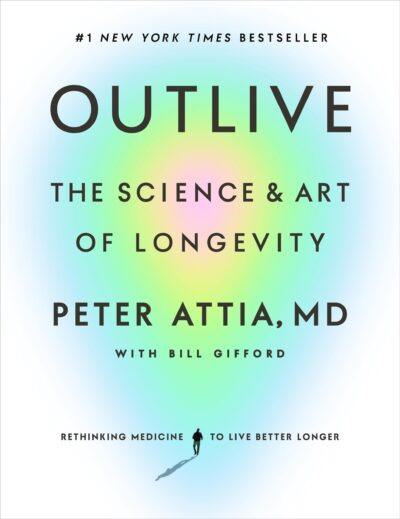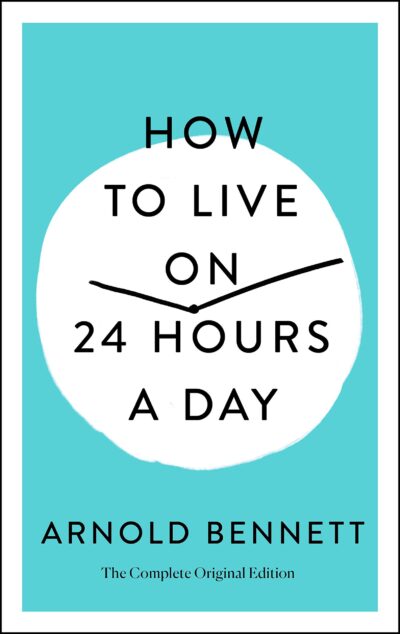68 Results with the "Self-help" genre
Adventure Fiction (1164)
Biography (435)
Business & Finance (1)
Children's Literature (124)
Comics (6)
Culture (51)
Drama (123)
Dystopian (29)
Fable (86)
Fantasy (1132)
Fantasy (203)
Fiction (1010)
Finance (1)
Gothic Fiction (12)
Historical Fiction (615)
History (122)
Horror (56)
Lifestyle (36)
Literary (404)
Literary Fiction (207)
Memoir (113)
Mystery (422)
Non-fiction (87)
Novel (549)
Paranormal Fiction (96)
Philosophical (182)
Philosophy (45)
Poetry (249)
Political Fiction (14)
Politics (42)
Practical (32)
Psychological (4)
Psychological Thriller (108)
Relationship (6)
Romance Novel (716)
Romantic Melodrama (14)
Satire (91)
Science (46)
Science Fiction (345)
Society (65)
Society (2)
Spiritual Growth (1)
story (2)
Thriller (704)
True Crime (56)
view (11)
Women's Fiction (2)
Young Adult (233)
-
Chapter
Prologue: Facing Trauma
 Prologue: Facing Trauma Trauma can touch anyone, regardless of their circumstances or environment. It’s not limited to soldiers returning from war or those living in conflict zones like Syria or the Congo. The reality is that trauma affects our families, friends, and even ourselves. According to research from the Centers for Disease Control and Prevention (CDC), one in five Americans was sexually molested as a child, one in four was beaten by a parent, and one in three couples experiences physical…
Prologue: Facing Trauma Trauma can touch anyone, regardless of their circumstances or environment. It’s not limited to soldiers returning from war or those living in conflict zones like Syria or the Congo. The reality is that trauma affects our families, friends, and even ourselves. According to research from the Centers for Disease Control and Prevention (CDC), one in five Americans was sexually molested as a child, one in four was beaten by a parent, and one in three couples experiences physical…-
360.1 K • Ongoing
-
-
Chapter
Always Do Your Best
 THE FOURTH AGREEMENT Always Do Your Best THERE IS JUST ONE MORE AGREEMENT, BUT IT’S the one that allows the other three to become deeply ingrained habits. The fourth agreement is about the action of the first three: Always do your best. Under any circumstance, always do your best, no more and no less. But keep in mind that your best is never going to be the same from one moment to the next. Everything is alive and changing all the time, so your best will sometimes be high quality, and other times it…
THE FOURTH AGREEMENT Always Do Your Best THERE IS JUST ONE MORE AGREEMENT, BUT IT’S the one that allows the other three to become deeply ingrained habits. The fourth agreement is about the action of the first three: Always do your best. Under any circumstance, always do your best, no more and no less. But keep in mind that your best is never going to be the same from one moment to the next. Everything is alive and changing all the time, so your best will sometimes be high quality, and other times it…-
90.9 K • Ongoing
-
-
 Chapter 11 explores the complexities of traumatic memory, using the case of Julian, a man who had repressed memories of being sexually abused by a Catholic priest, as a pivotal example. The story is a powerful illustration of how trauma can lie dormant for years, only to resurface unexpectedly, often triggered by a single event or memory. Julian’s experience, marked by vivid images and overwhelming emotions, reflects the fractured nature of traumatic memory, where the mind struggles to process and…
Chapter 11 explores the complexities of traumatic memory, using the case of Julian, a man who had repressed memories of being sexually abused by a Catholic priest, as a pivotal example. The story is a powerful illustration of how trauma can lie dormant for years, only to resurface unexpectedly, often triggered by a single event or memory. Julian’s experience, marked by vivid images and overwhelming emotions, reflects the fractured nature of traumatic memory, where the mind struggles to process and…-
360.1 K • Ongoing
-
-
 Chapter 15 highlights the complex relationship between diet, metabolic health, and individual nutritional needs, emphasizing that there is no universal solution when it comes to food. Through personal anecdotes and stories from patients, the author illustrates how commonly held beliefs about nutrition—such as the idea that a vegan diet or trendy eating plans automatically lead to better health—can often be misleading. These narratives shed light on the flaws of the Standard American Diet (SAD), which…
Chapter 15 highlights the complex relationship between diet, metabolic health, and individual nutritional needs, emphasizing that there is no universal solution when it comes to food. Through personal anecdotes and stories from patients, the author illustrates how commonly held beliefs about nutrition—such as the idea that a vegan diet or trendy eating plans automatically lead to better health—can often be misleading. These narratives shed light on the flaws of the Standard American Diet (SAD), which…-
87.7 K • Ongoing
-
-
 Chapter V raises a sharp question that most people avoid asking: how much of our day is actually used with intention? It begins by drawing attention to our morning routines, especially during the commute. Many individuals fill this time with newspapers, not necessarily for insight, but out of habit. These moments pass quickly, often forgotten as soon as they occur. The author challenges the value of this ritual, pointing out that rushed news digestion offers little depth or lasting understanding. There’s…
Chapter V raises a sharp question that most people avoid asking: how much of our day is actually used with intention? It begins by drawing attention to our morning routines, especially during the commute. Many individuals fill this time with newspapers, not necessarily for insight, but out of habit. These moments pass quickly, often forgotten as soon as they occur. The author challenges the value of this ritual, pointing out that rushed news digestion offers little depth or lasting understanding. There’s…-
62.8 K • Ongoing
-
-
Chapter
ACKNOWLEDGMENTS
 ACKNOWLEDGMENTS This book is the fruit of thirty years of trying to understand how people deal with, survive, and heal from traumatic experiences. Thirty years of clinical work with traumatized men, women and children; innumerable discussions with colleagues and students, and participation in the evolving science about how mind, brain, and body deal with, and recover from, overwhelming experiences. Let me start with the people who helped me organize, and eventually publish, this book. Toni Burbank, my…
ACKNOWLEDGMENTS This book is the fruit of thirty years of trying to understand how people deal with, survive, and heal from traumatic experiences. Thirty years of clinical work with traumatized men, women and children; innumerable discussions with colleagues and students, and participation in the evolving science about how mind, brain, and body deal with, and recover from, overwhelming experiences. Let me start with the people who helped me organize, and eventually publish, this book. Toni Burbank, my…-
360.1 K • Ongoing
-
-
 Chapter 1: Lessons from Vietnam Veterans. In the late 1970s, the author began their work as a psychiatrist at the Boston Veterans Administration Clinic, encountering a patient named Tom, a Vietnam War veteran. Tom's story unfolded over the course of his sessions, revealing a man deeply scarred by his experiences in Vietnam. He had joined the Marine Corps out of duty and idealism, rising quickly to the role of platoon leader. After surviving a harrowing experience during the war, where he witnessed the…
Chapter 1: Lessons from Vietnam Veterans. In the late 1970s, the author began their work as a psychiatrist at the Boston Veterans Administration Clinic, encountering a patient named Tom, a Vietnam War veteran. Tom's story unfolded over the course of his sessions, revealing a man deeply scarred by his experiences in Vietnam. He had joined the Marine Corps out of duty and idealism, rising quickly to the role of platoon leader. After surviving a harrowing experience during the war, where he witnessed the…-
360.1 K • Ongoing
-
-
Chapter
Breaking Old Agreements
 Breaking Old Agreements EVERYONE TALKS ABOUT FREEDOM. ALL AROUND the world different people, different races, different countries are fighting for freedom. But what is freedom? In America we speak of living in a free country. But are we really free? Are we free to be who we really are? The answer is no, we are not free. True freedom has to do with the human spirit — it is the freedom to be who we really are. Who stops us from being free? We blame the government, we blame the weather, we blame our…
Breaking Old Agreements EVERYONE TALKS ABOUT FREEDOM. ALL AROUND the world different people, different races, different countries are fighting for freedom. But what is freedom? In America we speak of living in a free country. But are we really free? Are we free to be who we really are? The answer is no, we are not free. True freedom has to do with the human spirit — it is the freedom to be who we really are. Who stops us from being free? We blame the government, we blame the weather, we blame our…-
90.9 K • Ongoing
-
-
 Chapter 12 delves into the profound and complex nature of trauma and its enduring effects on the mind and body. The historical perspective on trauma has evolved over the centuries, with medical and psychological communities initially reluctant to acknowledge the depth of its impact. Not until the horrors of World War I forced the issue into the limelight did society begin to confront the long-lasting physical and psychological effects of trauma, often termed "shell shock" at the time. Despite this, the…
Chapter 12 delves into the profound and complex nature of trauma and its enduring effects on the mind and body. The historical perspective on trauma has evolved over the centuries, with medical and psychological communities initially reluctant to acknowledge the depth of its impact. Not until the horrors of World War I forced the issue into the limelight did society begin to confront the long-lasting physical and psychological effects of trauma, often termed "shell shock" at the time. Despite this, the…-
360.1 K • Ongoing
-
-
 Chapter 16 underscores the essential role that sleep plays in mental clarity, emotional balance, and long-term physical well-being. The chapter opens with a gripping account of the author's personal experience during medical residency, where severe sleep deprivation led to dangerous lapses, including nearly falling asleep while driving. This alarming incident serves as a reminder that exhaustion is more than just a feeling—it has real-world consequences that can endanger lives. Many people assume they…
Chapter 16 underscores the essential role that sleep plays in mental clarity, emotional balance, and long-term physical well-being. The chapter opens with a gripping account of the author's personal experience during medical residency, where severe sleep deprivation led to dangerous lapses, including nearly falling asleep while driving. This alarming incident serves as a reminder that exhaustion is more than just a feeling—it has real-world consequences that can endanger lives. Many people assume they…-
87.7 K • Ongoing
-
- 1 2 … 7 Next
